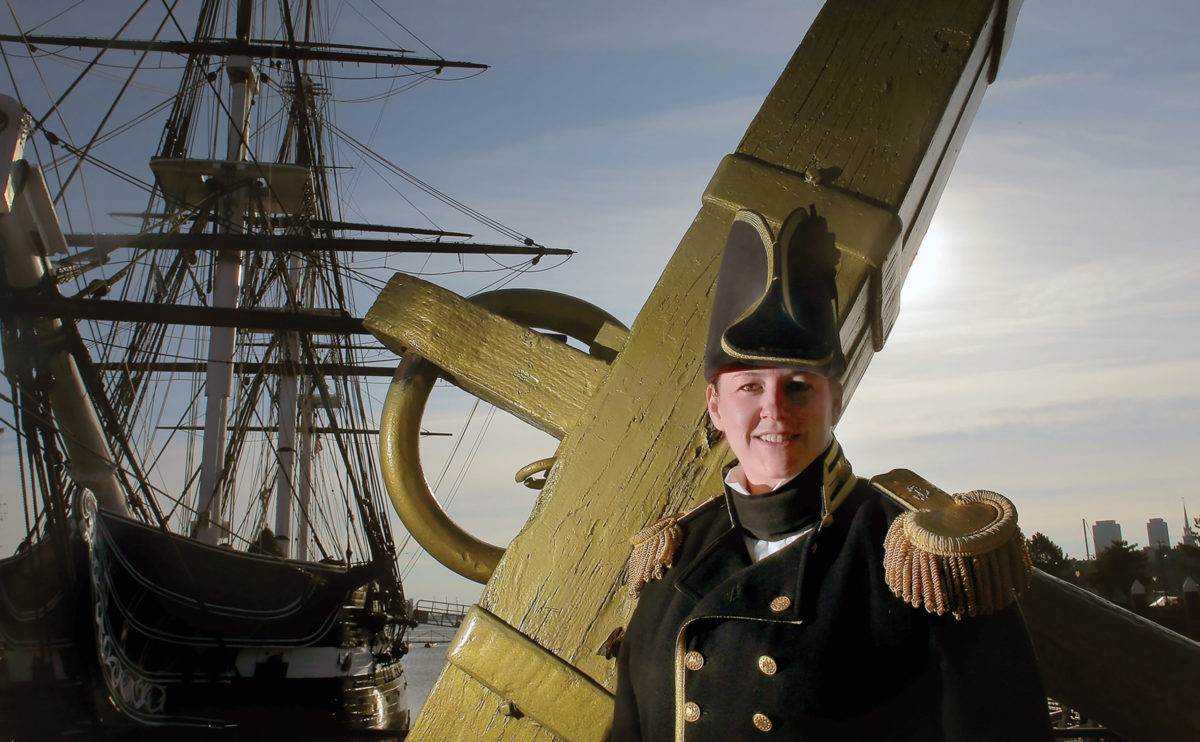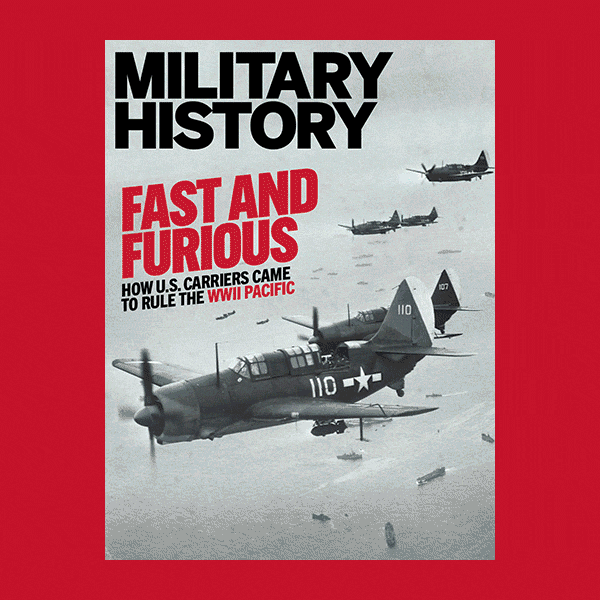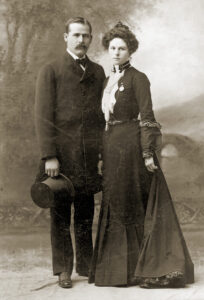For the first time in the 224 years since its maiden voyage the heavy frigate USS Constitution [ussconstitutionmuseum.org] has a female captain. Cmdr. Billie J. Farrell took the helm of the world’s oldest commissioned warship still afloat during a change-of-command ceremony in Boston Harbor in January 2022. Among other assignments, the 2004 U.S. Naval Academy graduate previously served as the combat systems officer on USS San Jacinto (CG 56) and the executive officer aboard USS Vicksburg (CG 69), both guided missile cruisers. The mother of two young children, she is married to a fellow Navy officer, Cmdr. Paul Farrell. Military History caught up with the new skipper of “Old Ironsides” to get her thoughts about serving on such a historic ship.
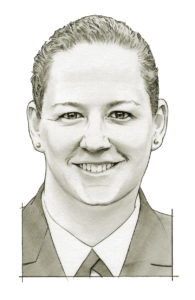
How does it feel to be the first woman to command Constitution?
It’s amazing. It’s just a great opportunity to be here and be in this position. Women have been serving as commanders of combatants for the Navy since 1998. While it’s unique for this ship, it is not unique for the surface Navy. And so I get to be the representative to highlight the fact that we have women in command of ships all across the world right now. Capt. Amy Bauernschmidt of USS Abraham Lincoln is the first woman in command of an aircraft carrier on deployment. More than 70,000 women serve in the Navy today. This provides a great platform to showcase the amazing things they’re doing across the world.
You served on guided missile cruisers. How does this command compare?
It’s a little different [laughs]! Not the same weapons system I’m used to. There are a few things to learn, for sure, especially with 224 years of history. The foundations are actually pretty much the same: The hard work, dedication, drills, things sailors had to do 224 years ago, we still have to do in today’s Navy. Constitution was undefeated in battle; she was 33 and 0. Part of the reason she was so successful was the drills the captains had the crews do. They ran gun drills more than their adversaries and were able to cut the time it took to get rounds downrange. We rely on the same skill sets today—attention to detail and staying proficient. It is a nice reminder of where we were, where we are and where we’re going. This is where the Navy started. This ship’s mission is still a mission we have today: protection and freedom of the seas.
A lot of my job relies on the day-to-day operations of the ship here and then engagement with the community. I make it a point to come on the ship at least once a day, especially if I see a large tour group. I like to come over and say hello wearing my 1812 uniform. The boots are very slick, though. They don’t have any tread on them, so I have to be careful.
How did you prepare for this two-year assignment?
It is definitely different. Part of our mission is to preserve, promote and protect the legacy of Constitution. A large part of what we do is focused on the history and telling that story. But we’re also part of the Navy. Half of our crew are first-term sailors. When they leave here, they’re going to do the jobs they were assigned in their rates, so we have to make sure they’re ready to do that as well. We have to balance the challenges of 224 years ago with the challenges of 2022. We do sail training on certain days, so we can do our “underways” effectively and safely. But then we have to do, say, cyber awareness training, because that’s something the Navy says we need to do and to stay proficient in.
Constitution’s first captain was Samuel Nicholson (1798–99), and you’re the 77th. How does that legacy strike you?
That’s another thing I’m always in awe of. Right outside this bulkhead is the list of all the previous commanding officers. When you look at those names, there is something to be learned from every one of those individuals—all the way back to Nicholson. It’s a testament to their attention to detail and work ethics and the lessons they drove into their crews that made them successful. And that’s the skill set we still rely on heavily today.
What is it like learning the ropes on a ship like this?
It’s all an internal program. The Navy doesn’t have any schools to teach you how to sail a square-rigged ship anymore. I love explaining to guests that this is where the phrase “learning the ropes” comes from—the rigging of a sailing ship. We have programs to train our sailors to do the things they need to do to be safe and effective. For me, I think the last time I sailed on a ship like this was at the Naval Academy during “Fleet Summer.” We trained on 44-foot sailboats. Still slightly different than this ship, but it definitely gave me an appreciation, even in that scale, for how much work it entails to actually sail a vessel.
We do sail training year-round, even in winter. We do lectures. We have a mock-up room in one of the buildings so sailors can practice climbing the rigging. Then we do the things that any other Navy ship would do when it goes out. We check the tides, currents and weather. We do our briefs with communications and talk to the pilots. We have to do all the same things a modern Navy ship does.
Are there any 21st-century conveniences or technologies aboard Constitution?
No. This is an 18th-century sailing vessel. No motor, no modern communication system, no radar. We go out under total sail power. We do have electricity and some damage control. Otherwise, she’s true to what she would have been back in the day. We don’t even have heat, so it gets very cold on the ship in the winter. I’m planning to spend a few nights in the captain’s quarters, but only when it’s warm.
We sail seven times a year on different cruises, usually to honor certain groups. We have a good partnership with Vietnam veterans, and we take them out once a year. July 4 is the big one—when we turn the ship around so it wears evenly at the dock—and that’s open for a public lottery. We’ve been encouraging people to sign up for the once-in-a-lifetime chance to get underway with us by visiting our social media pages. We usually take out 150 people, though last year we only did 25 because of COVID-19 restrictions.
Do you adhere to any particular ceremonial duties?
We do colors twice a day—at 8 a.m. and sunset. Every morning and evening we do the flag and fire the gun. You can set your watch by it. We also do the standard 12 o’clock reports, which is something we still do on all Navy ships. It’s rooted in tradition. Every day a sailor tells me they have the daily reports ready and requests permission to strike eight bells.
The Navy has done a great job maintaining these traditions. It’s so hard sometimes for organizations to hold on to that, and we have managed to do it. Even with the 1812 uniforms and today’s service dress blues, you can see the similarity between them. We still wear the Navy blue jacket with the white shirt, black neck tab and gold buttons.
We still do captain’s mast, which comes from “laying before the mast” for judgement from the captain. Most ships don’t have masts anymore, but we use phrases that are tied to our past.
Do you have a favorite story about Constitution?
The August 1812 battle with HMS Guerrière is the most iconic. It’s the one everybody knows, but that’s for a reason. The ship’s nickname, “Old Ironsides,” came from that battle. They [the crew] saw the enemy cannonballs bouncing off the ship’s sides, and the name stuck. It’s an amazing story of perseverance, dedication and winning.
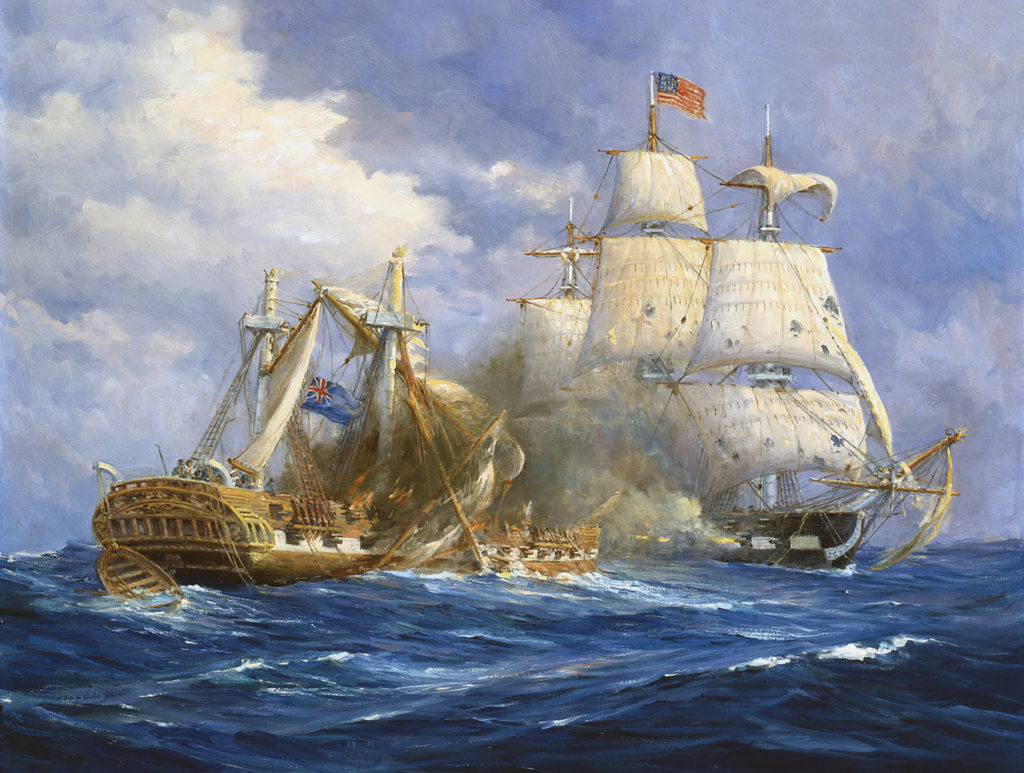
What prompted you to join the Navy?
I saw a Naval Academy graduation on TV when I was in sixth grade. I immediately went to my parents and said, “That’s where I’m going to go to school,” which made my dad very excited. At the time, my mom said, “You can’t do that—they don’t let women go there,” which wasn’t true but that’s what she thought then. I had completely forgotten that story until she reminded me about it recently. She didn’t know the first female class graduated in 1980. In her mind that was just something her baby girl was not going to be doing.
I decided that’s what I wanted. It would be a great education and a great chance to serve my country. I had a high school physics teacher who was a retired Navy captain. He took me under his wing and helped me through the application process. I also had a neighbor who was a retired Navy captain who liked to sit around and tell sea stories, which made me want to do it even more.
Tell us about your first visit to Constitution, when you were in high school.
It was a family vacation, a very long road trip. We actually went to the Naval Academy earlier in the trip so I could look at the campus. There’s a picture of me standing next to the ship wearing a Navy hat, because we had just come from Annapolis. As fate would have it, we stopped here and snapped that picture. The first thing I did when I found out I was selected for this assignment was to go back to the photo album and find it.
At the time did you wonder what it might be like to command Constitution?
No, not at all. I remember just being in awe of the ship. The second you walk onboard “Old Ironsides” you feel the history. She’s beautiful. You feel the presence of all those people who have served here and gave their lives on these decks. There’s no way I could have predicted that 24 years later I would be in command of this ship. And I’m very privileged to be able to do so.
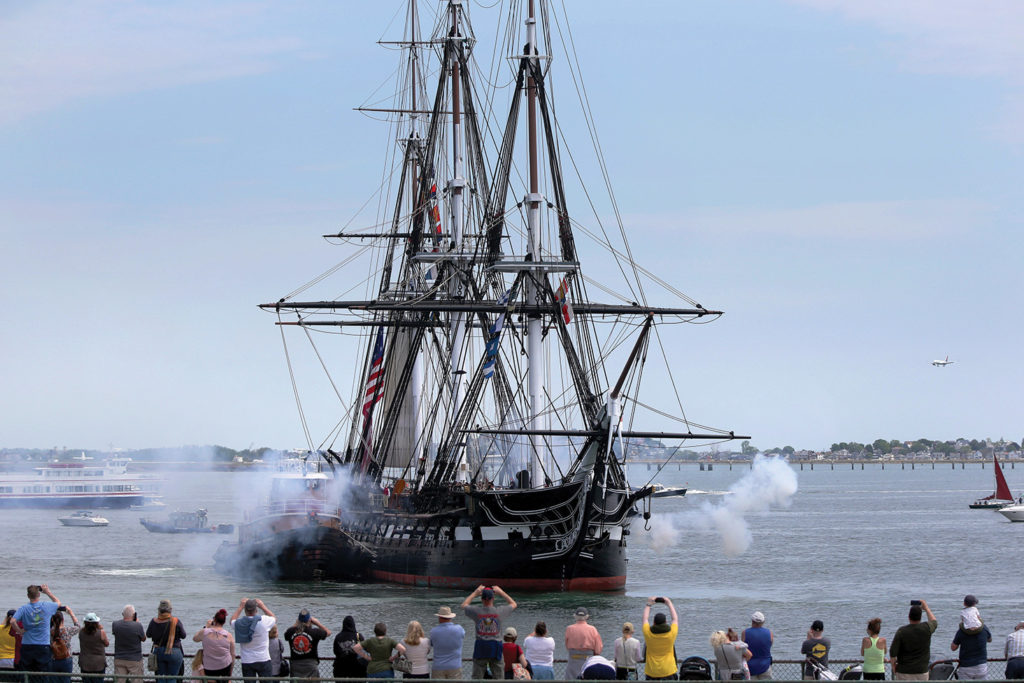
Do you have any plans during your time in command?
The ship turns 225 this year, so my focus right now is making that the best celebration we can. We’re doing outreach programs so the public will come and visit the ship. We’re pushing that more this year to reach a bigger audience because of the anniversary. We are America’s ship, homeported here in Boston. We are open for the entire country to visit and excited to host anybody who wants to come see us.
What are you most looking forward to as commander?
I’m looking forward to all of it. I want to share my love of the Navy and this ship with the public and the crew. Our 80 active-duty sailors are phenomenal. They come here on special-duty orders. They’re handpicked because they want to be here and want to tell the story of the ship. To get to work with them is just an awesome opportunity.

